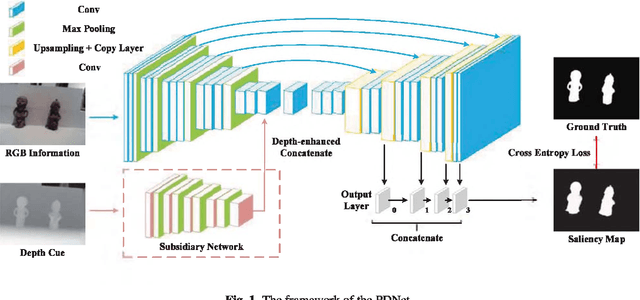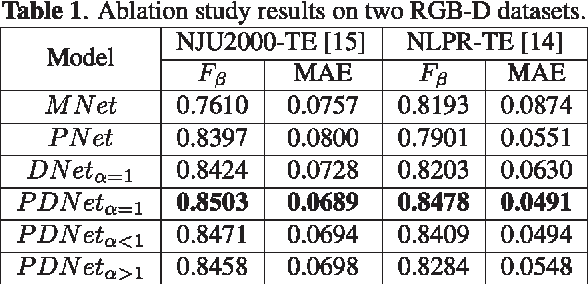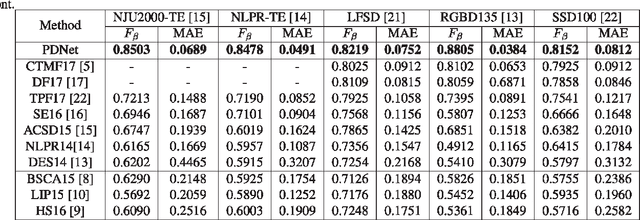Xing Cai
PDNet: Prior-model Guided Depth-enhanced Network for Salient Object Detection
Oct 13, 2018



Abstract:Fully convolutional neural networks (FCNs) have shown outstanding performance in many computer vision tasks including salient object detection. However, there still remains two issues needed to be addressed in deep learning based saliency detection. One is the lack of tremendous amount of annotated data to train a network. The other is the lack of robustness for extracting salient objects in images containing complex scenes. In this paper, we present a new architecture$ - $PDNet, a robust prior-model guided depth-enhanced network for RGB-D salient object detection. In contrast to existing works, in which RGB-D values of image pixels are fed directly to a network, the proposed architecture is composed of a master network for processing RGB values, and a sub-network making full use of depth cues and incorporate depth-based features into the master network. To overcome the limited size of the labeled RGB-D dataset for training, we employ a large conventional RGB dataset to pre-train the master network, which proves to contribute largely to the final accuracy. Extensive evaluations over five benchmark datasets demonstrate that our proposed method performs favorably against the state-of-the-art approaches.
SingleGAN: Image-to-Image Translation by a Single-Generator Network using Multiple Generative Adversarial Learning
Oct 11, 2018



Abstract:Image translation is a burgeoning field in computer vision where the goal is to learn the mapping between an input image and an output image. However, most recent methods require multiple generators for modeling different domain mappings, which are inefficient and ineffective on some multi-domain image translation tasks. In this paper, we propose a novel method, SingleGAN, to perform multi-domain image-to-image translations with a single generator. We introduce the domain code to explicitly control the different generative tasks and integrate multiple optimization goals to ensure the translation. Experimental results on several unpaired datasets show superior performance of our model in translation between two domains. Besides, we explore variants of SingleGAN for different tasks, including one-to-many domain translation, many-to-many domain translation and one-to-one domain translation with multimodality. The extended experiments show the universality and extensibility of our model.
 Add to Chrome
Add to Chrome Add to Firefox
Add to Firefox Add to Edge
Add to Edge